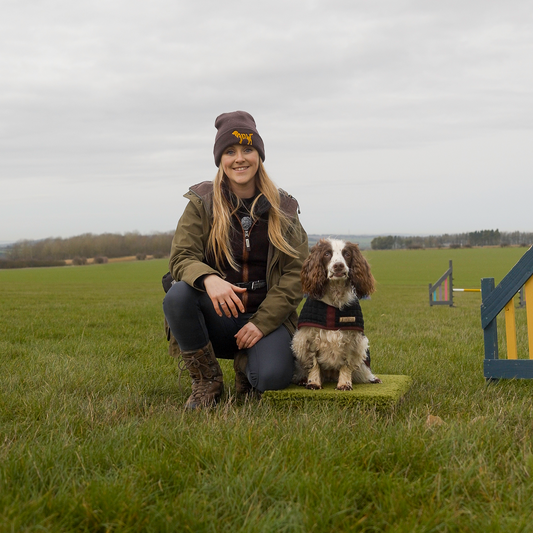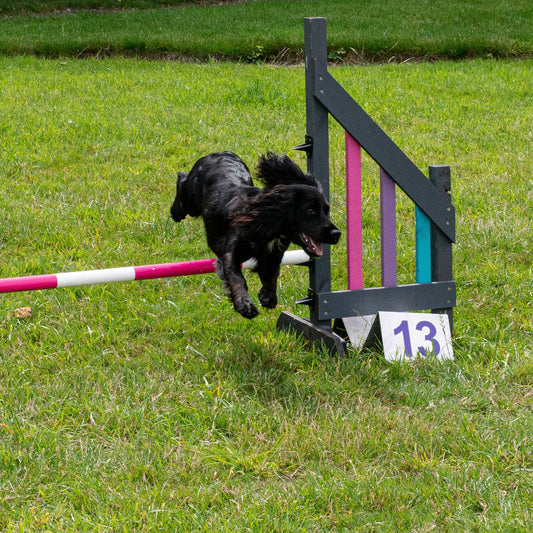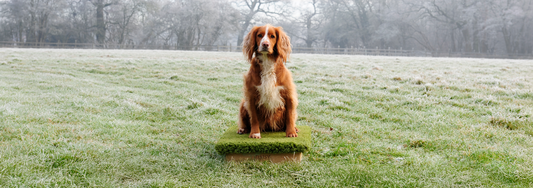Cheeky youngsters
“Rosie, our lab, is 5 months now and our biggest issue we can't seem to get rid of is counter surfing. She's never gotten anything from the counter, but it doesn't stop her checking to see what's up there!! And as she grows she can reach further and further. Living in hope!
Another one that crops up occasionally is barking. She'll have a day where she barks at tiny noises. I have to be honest and say its usually the days where she hasn't had quite enough exercise, and when she starts it seems to go on all day. Loud noises don't bother her but a little squeek or a tiny bump will set her off with the hackles raised. I'm hoping by ignoring it it will fade as she gets older, but any other advice would be great!”
Hi,
It sounds like she’s just about to enter adolescence (typically happens between 6-18 months).
As dogs navigate this developmental stage and changing hormones, they can feel frustrated so many owners experience an increase in undesirable behaviour like jumping and barking.
But also the hormonal changes can make dogs appear cheeky but what's really happening is that they're increasingly to explore and interact with their environment and the people in it. In Rosie's case, exploring the counter tops! (Think of the parallel of adolescent wolves leaving their den more and more!)
In turn, from the dog’s perspective what was once no big deal to the dog now feels scary; what was once easy to do is now stressful; what once made sense is now confusing. For Rosie, her barking could be fear based.
These changes happen because, during the adolescence phase, some key events occur that alter both the structure and function of the brain.
The connection between the part of the brain responsible for decision-making
(frontal cortex) and the part responsible for emotional processing (amygdala) decreases! This impairs behavioural control.
This can commonly be mistaken for naughtiness but the science is the part of the brain that controls a dog’s ability to manage its own behaviour (frontal cortex) is not fully developed.
By understanding what changes your adolescent dog is experiencing we can all gain greater understanding and compassion.
If you have an adolescent dog, what can you do?
- Keep going with training, break exercises into easy steps and revisit foundations. With Rosie, my suggestion would be focusing on training and rewarding the opposite of jumping e.g. sitting. Bring her Place board into the kitchen & re-visit the T.A.R.G.E.T stages in the Place Board Course.
- Provide your dog with a quiet sleep space so that they can consolidate new/revisited skills effectively.
- Give your dog long walks to sniff and explore, giving their brain time to decompress.
- Let them watch going on around them because they have a decreased ability to process the information they get from the environment.
- Keep a distance from triggers such as the presence of dogs, vehicles, people, or wildlife.
Hope that helps!
About the author:
Hi 👋 I’m Emma, accredited as a professional dog trainer by the Institute of Modern Dog Trainers (IMDT). I help owners of energetic dogs achieve the dog-owning life they envisioned by providing robust obedience & agility training for dogs in Balsham and Barton, near Cambridge.
Disclaimer: The content of this article does not include personalised advice and is for information purposes only. If you need individual advice or other enquiries please click here to get in contact or if you're not local to Anglian Dog Works, you can find a trainer in your area by going to the IMDT website: https://www.imdt.uk.com/find-a-qualified-imdt-trainer






